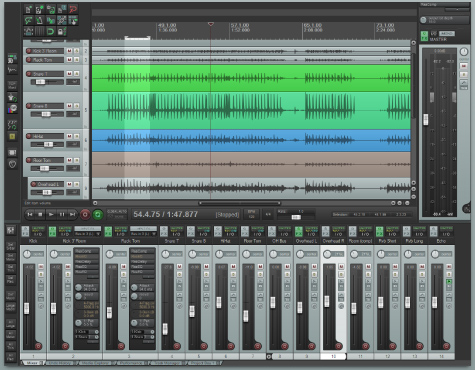
I mentioned before there are numerous hardware choices. Everything from using the smart phone you carry around to dedicated multitrack recorders to your computer. Today I’m going to talk about software for your computer. No matter what platform you prefer there are numerous options and something for every budget. I’m not a huge expert on Linux but I know at least one recorder, Audacity, is available for that platform. Pretty much everything else I will discuss here is available for both Mac and Windows PCs.
I already mentioned Audacity and it’s special because it’s both open-source and free. It’s also only an audio recording and editing package whereas the other products I am talking about here are Digital Audio Workstations (DAW). The difference with the other packages is they also have virtual instruments built in so they are complete music creation packages with sequencing, synths, drums, loops, and effects. That said, I actually use Audacity for lots of things like quick recording and file conversion. It’s a great starting off point if you just want to get some ideas down or listen to yourself.
Reaper is not free but it’s crazy cheap for the amount of stuff it does. Reaper is super powerful and has a ton of features but it can be a little tough to figure out especially if you’re new to DAW software. If you know what you’re doing and you don’t mind wading through a rather arcane interface you will find something lightning fast, powerful, and deep. I know of at least two recording professionals (friends) that switched from their Pro Tools rigs to Reaper and they don’t seem to be looking back.
Another free option is to find package deals with audio interfaces as many ship with software so you can easily get started. For instance, you can get Pro Tools Express with the purchase of MBOX products, you can get Reason Essentials with the purchase of Balance, and there are several other similar deals out there. Odds are you will want an audio/MIDI interface for your computer so if you can get the software thrown in for free that’s a great deal.
Another inexpensive option that is only available to Mac users is Garage Band. Garage Band is basically the light version of Logic Pro – in fact you can open up Garage Band projects in Logic Pro and instantly gain access to the increased features without any conversion. I think I paid 15 dollars for the latest upgrade (maybe it was 20 – can’t remember) and the original version came free with iLife when I bought this laptop. GB errs on the easy and simple side but it hides a lot of power if you dig just a little bit. It’s very easy to learn and also has some cool features to help you learn guitar or piano or to quickly generate tracks to jam along with. If you’re a Mac guy then this is definitely a great way to start and unfortunately there’s nothing quite like it for Windows but there are some powerful combinations that could get you close and that’s possibly a story for another day.
These are all great ways to get started but the sky is the limit with this stuff. Later on I’ll post about some of the pricier and more powerful options out there. For now, grab one of these free or inexpensive packages and get going.